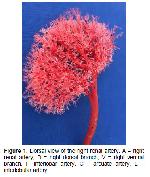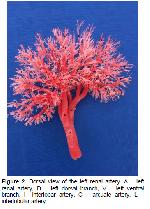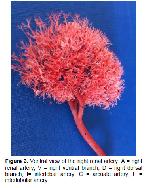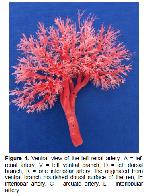In this study we showed that the aa. renales originated from each side of the abdominal aorta. This finding was in agreement with that described by Aksoy et al.
18 in Tuj sheep and Nickel et al.
5 for ruminants. Although, Ghoshal
30 determined that their origins to be from the ventral surface of the aorta in the ruminants.
In the study under investigation observed that the a. renalis dextra was longer than the a. renalis sinistra, confirming observations of Sajjarengpong and Adirektaworn 31 in dog, Ozdemir et al. 17 in Kangal dog, Aksoy et al., 18 in Tuj sheep and Nickel et al. 5 in horse, Paryani 32 in one humped camel mentioned that the a. renalis dextra was longer than the left one. While, Maženský et al. 33 in New Zealand White rabbits, Aksoy and Ozudogru 13 in Van cat, Ozudogru and Ozdemir 27 in wolf, Nickel et al 5 in cattle mentioned that the a. renalis sinistra was longer than the right one.
We have reported that the primary divisions of renal arteries were a dorsal and a ventral branch, as also reported in most mammals 13,17,18,27.
We have observed that dorsal and ventral branches of renal arteries gave off multiple aa. interlobares. Thereafter, aa. interlobares gave off multiple aa. arcuates. Finally, these arteries were terminated as aa. interlobulares. However, it has been also described for calves 20, goats 19, sheep 18, Kangal dog 17 and rabbits 22.
Aslan and Nazli 19 showed in the goat and Morkaraman sheep that origins of the dorsal and ventral branches were approximately 2.44 cm and 2.35 cm far from the hilus, respectively, Aksoy et al. 18 reported that distance to be 11.7 cm. We have measured that dorsal and ventral branches of renal artery 3.54.5 cm from the hilus, and the thereof left renal artery 2.53.8 cm.
In conclusion, pattern of the renal arteries of Hasak sheep resembled that reported in the literature even though there present some essential variations. There were, at first, no anastomoses between the renal arteries and their branches. A ventral branch gave rise to an a. interlobaris nourishing the dorsal surface of one left kidney.






